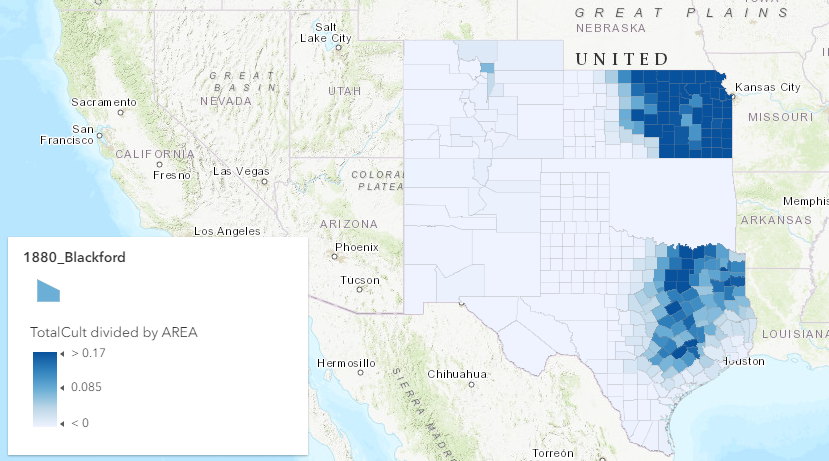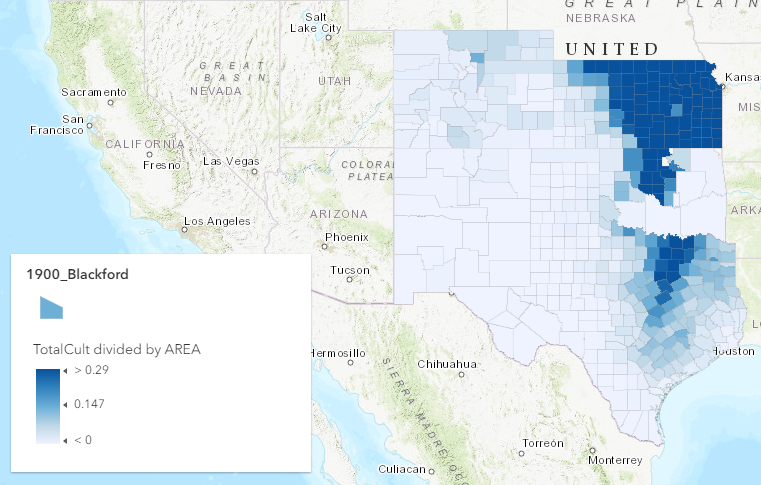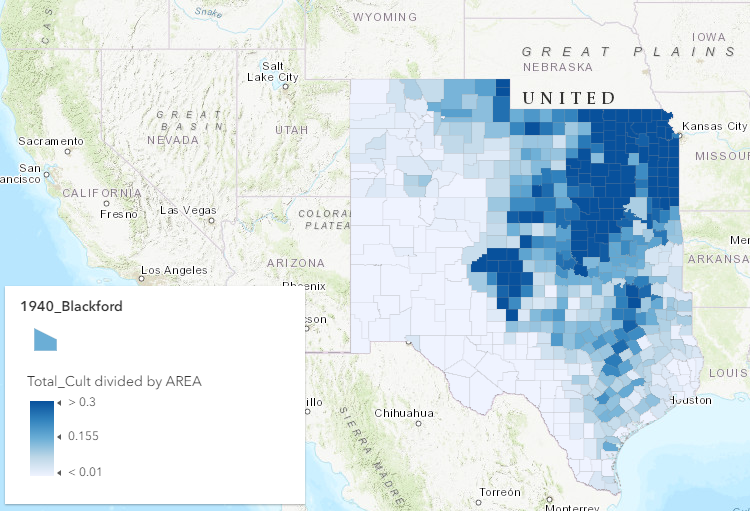
To demonstrate the change over time of land being cultivated the map above is in the first in a series of maps that demonstrates how the over-cultivation of land led to the environment pushing back on mankind through the Dust Bowl in the 1930s. After this environmental event, cultivation of the land was then pushed back to rates similar to that above. In the figure above it can be seen that areas in the eastern parts of Texas and Kansas that the percentage of land is much more concentrated compared to the western parts of the states which can be attributed to the country still expanding in a westward trend.

In figure 2 above, it can be seen that the land being cultivated is slowly creeping westward in comparison to figure 1. Additionally it can be seen that the areas that were already cultivated are becoming more concentrated with more of the land being used to cultivate more crops than in figure 1, twenty years earlier.

In the last figure, it can be seen that the land cultivated overall is much more vast and westward in comparison to figures 1 and 2. However, the areas that are cultivated are much less condensed than the previous two figures. This can be credited to the Dust Bowl that took placed five years before this data was taken and the farmers learning that certain land is more fertile than others, and no matter how fertile the land is, if you over cultivate the land it will be useless in the near future. Also in the 1940s, World War Two was looming overhead and the more crops that could be efficiently grown, the more crops that could be sent to support the war effort which may have been a factor to discover a way to cultivate the land in a way that allowed the farmers to use the land to the fullest extend without causing another Dust Bowl by reaching natures natural limits.


Nicely done.